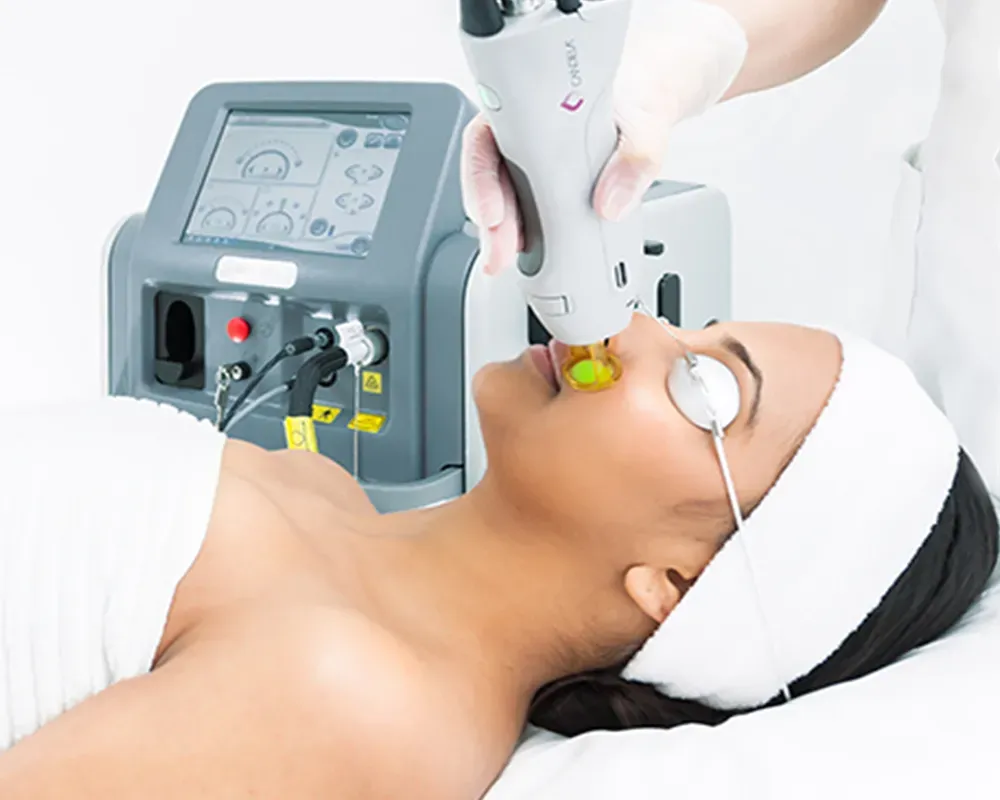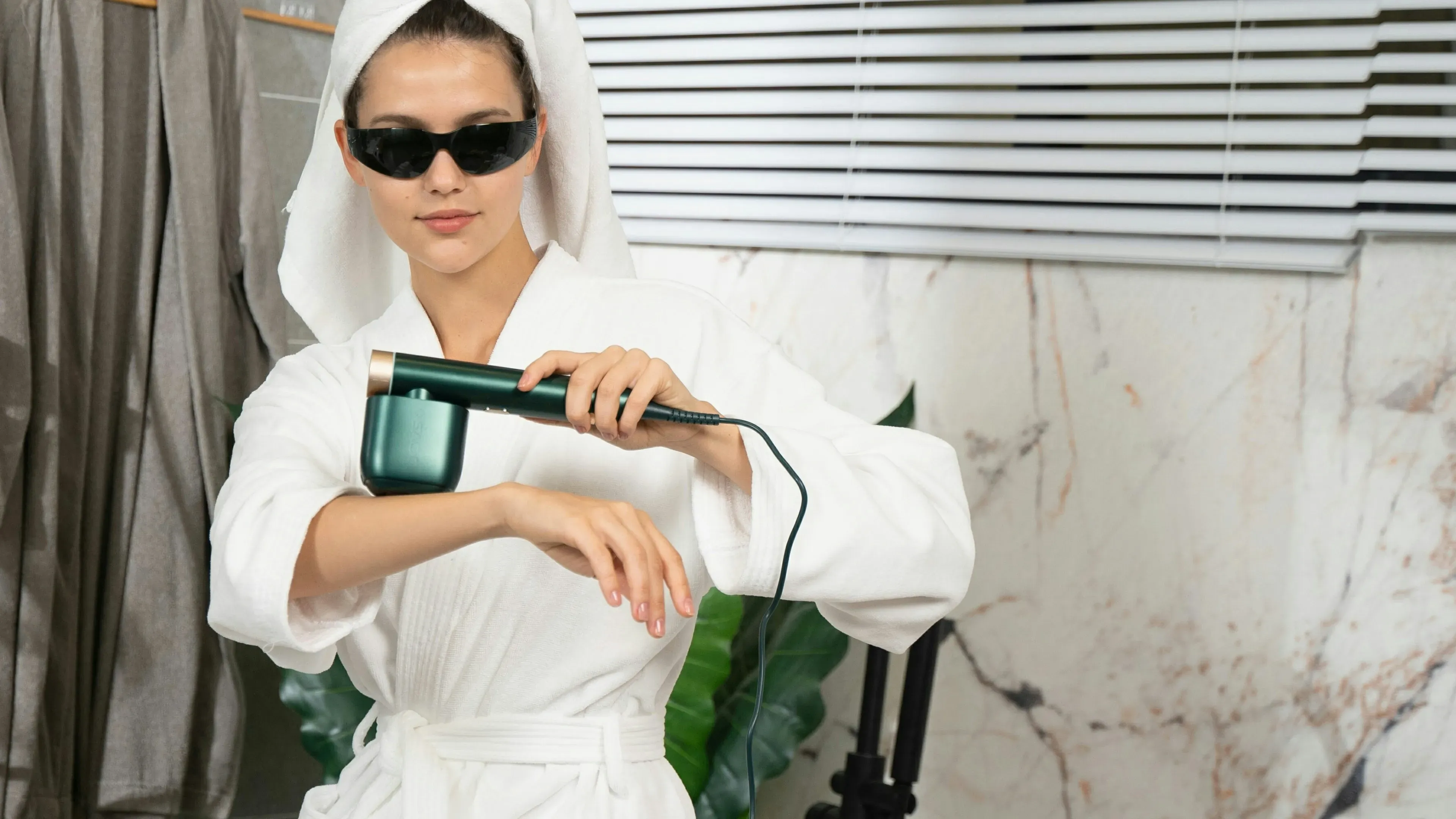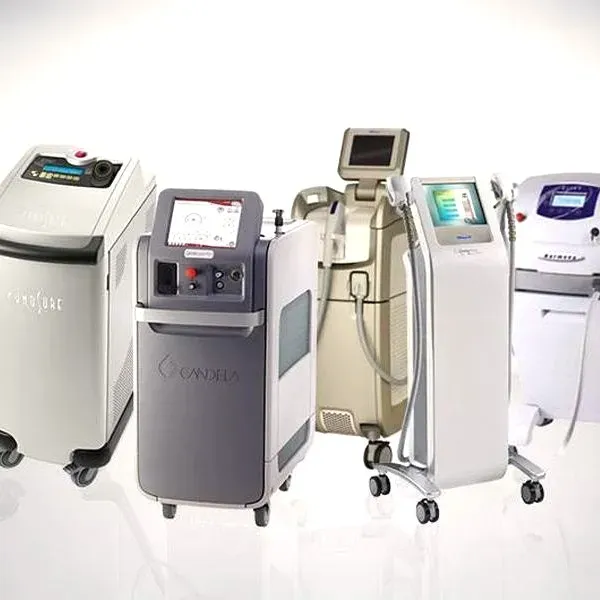Table of Contents
Tired of the endless cycle of shaving, waxing, or plucking? Laser hair removal promises a more permanent solution, a chance to ditch the razor for good. But step into the world of laser treatments, and you're hit with a dizzying array of machines and technologies. Suddenly, you're asking, "what is the best laser for hair removal?" It feels like trying to pick the perfect coffee bean without knowing the difference between arabica and robusta. The truth is, there isn't one single "best" laser that works for everyone.
What is the Best Laser for Hair Removal? It's Not a Simple Answer

What is the Best Laser for Hair Removal? It's Not a Simple Answer
Why "Best" Is Relative
Look, everyone wants a simple answer, right? You just want to know which button to push or which machine to ask for to get rid of unwanted hair permanently. But asking "what is the best laser for hair removal?" is a bit like asking "what is the best car?" It totally depends on what you need it for, who's driving, and where you're going. For laser hair removal, the "best" machine isn't some mythical unicorn laser that works perfectly on everyone, everywhere. It's highly individual.
Think of it this way: the laser works by targeting the pigment (melanin) in your hair follicle. Different lasers use different wavelengths of light. This means some wavelengths are better at targeting high concentrations of melanin (dark hair) while being gentler on skin with less melanin (lighter skin). Others are better at penetrating deeper to reach follicles in darker skin tones without damaging the surface. Getting this match wrong is where things go sideways.
Getting the Wrong Match Matters
Choosing the incorrect laser for your specific skin tone and hair color isn't just about potentially wasting money on ineffective treatments. There are real risks involved. You could end up with burns, discoloration, scarring, or even paradoxical hair growth (yes, the opposite of what you want!). This is why walking into a place that uses a one-size-fits-all approach should raise a red flag. A reputable clinic understands that figuring out what is the best laser for hair removal for *you* is step one.
It requires a proper consultation to assess your unique characteristics. Your skin's natural ability to tan (Fitzpatrick skin type), the color and thickness of your hair, and even the area you want treated all play a role. Don't let anyone tell you one machine is the magic bullet for every human being who walks through the door. It just isn't how the science works.
Factors influencing the "best" laser choice:
- Your specific skin tone (Fitzpatrick type)
- The color of your hair (dark, light, red, grey)
- The thickness of your hair
- The area being treated
- Your history with tanning or sun exposure
Understanding Different Laser Technologies for Hair Removal

Understanding Different Laser Technologies for Hair Removal
The Alexandrite and Diode: Workhorses of the Laser World
Alright, so you've accepted that there's no single "best" laser for hair removal. Good. Now, let's talk about the tools of the trade. Two heavy hitters you'll hear about are the Alexandrite and the Diode lasers. The Alexandrite laser, often running at a 755nm wavelength, is pretty effective for lighter skin tones (Fitzpatrick types I to III) with dark, coarse hair. It targets that melanin pigment like a heat-seeking missile. It's fast, which means treatments on larger areas can be quicker. However, its high melanin absorption means it carries a higher risk for darker skin types, potentially causing burns or pigment changes.
The Diode laser, typically operating around 800-810nm, offers a slightly longer wavelength. This lets it penetrate a bit deeper into the skin, which can be beneficial for reaching some hair follicles. It's considered versatile and can treat a broader range of skin types compared to the Alexandrite, often working well for Fitzpatrick types I to IV. Many clinics use Diode lasers because they strike a balance between effectiveness and relative safety across several skin tones. But remember, "broader range" doesn't mean "works on everyone without issue."
Nd:YAG and Ruby Lasers: Different Strokes for Different Folks
Moving down the line, we have the Nd:YAG laser (1064nm) and the Ruby laser (694nm). The Nd:YAG is the go-to for darker skin tones (Fitzpatrick types IV to VI). Its much longer wavelength bypasses the melanin in the upper layers of the skin more effectively, reducing the risk of surface burns and focusing the energy deeper on the hair follicle. While generally safer for darker skin, it might require more treatment sessions because the energy isn't absorbed as strongly by the hair pigment itself compared to shorter wavelengths. It's a trade-off between safety and speed.
The Ruby laser is one of the oldest types still in use, though less common now. It operates at a shorter wavelength (694nm) and is highly absorbed by melanin. This makes it quite effective for very light skin and dark hair, similar to the Alexandrite. However, it has a slower pulse repetition rate, meaning treatments take longer. It also has a higher risk profile for blistering and discoloration, especially on anything but the palest skin. So, while it might be mentioned, you'll likely encounter Alexandrite, Diode, or Nd:YAG systems more frequently when asking what is the best laser for hair removal during your consultations.
Laser Type | Wavelength (nm) | Best Suited For | Key Characteristics |
|---|---|---|---|
Alexandrite | 755 | Lighter skin (I-III), dark hair | Fast, high melanin absorption, higher risk for darker skin |
Diode | 800-810 | Broad range (I-IV) | Versatile, deeper penetration than Alexandrite |
Nd:YAG | 1064 | Darker skin (IV-VI) | Safer for darker skin, lower melanin absorption, may need more sessions |
Ruby | 694 | Very light skin, dark hair (less common) | One of the oldest, high melanin absorption, slower, higher risk profile |
Matching Your Skin Tone and Hair Color to What is the Best Laser

Matching Your Skin Tone and Hair Color to What is the Best Laser
Why Your Skin Tone is the Primary Filter
so you know there isn't one magical machine. The biggest piece of the puzzle in figuring out what is the best laser for hair removal for *your* body is your skin tone. Dermatologists use something called the Fitzpatrick scale, which basically ranks how your skin reacts to sun exposure – from Type I (always burns, never tans) to Type VI (never burns, deeply tans). This isn't just academic; it's critical for laser safety and effectiveness. Lasers target melanin, and your skin has melanin too. The more melanin in your skin (darker skin tones), the more carefully the laser wavelength needs to be selected to avoid damaging the skin while still hitting the hair follicle.
Using a laser designed for lighter skin on darker skin is asking for trouble. It's like trying to use a magnifying glass to start a fire on a cloudy day – you're just going to scorch the surface without getting to the core. A good practitioner will assess your Fitzpatrick type during your consultation. Don't guess. Be honest about how easily you tan or burn. This information directly dictates which laser technology is the safest and most likely to deliver actual results without leaving you with unwanted side effects.
Hair Color: The Other Half of the Equation
Skin tone is vital, but hair color is the laser's ultimate target. Lasers work by the light energy being absorbed by the melanin in the hair shaft, converting to heat, and damaging the follicle. This is why laser hair removal is most effective on dark hair with significant pigment. Blonde, red, grey, or white hairs typically have very little melanin, making them poor targets for most laser technologies. Trying to zap light-colored hair with a standard laser is often an exercise in futility and expense.
If you have lighter hair colors, you might be told you're not a good candidate for traditional laser hair removal. This isn't a clinic being difficult; it's just the reality of how the technology works. For those with sufficient pigment, the contrast between dark hair and lighter skin provides the ideal scenario for many lasers, allowing the light to pass through the skin and be selectively absorbed by the hair follicle. This is a key factor in determining what is the best laser for hair removal in your specific situation.
Fitzpatrick Skin Type | Characteristics | Generally Best Laser(s) |
|---|---|---|
I | Pale white; always burns, never tans | Alexandrite, Diode, Ruby (less common) |
II | White; always burns, tans minimally | Alexandrite, Diode |
III | Light brown; burns moderately, tans gradually | Alexandrite, Diode |
IV | Moderate brown; burns minimally, always tans well | Diode, Nd:YAG |
V | Dark brown; rarely burns, tans deeply | Nd:YAG |
VI | Deeply pigmented dark brown to black; never burns, tans deeply | Nd:YAG |
Safety, Results, and Finding What is the Best Laser Hair Removal Provider

Safety, Results, and Finding What is the Best Laser Hair Removal Provider
Why the Person Holding the Laser Matters More Than the Machine Itself
you've got the lowdown on the different laser types – Alexandrite, Diode, Nd:YAG. You know your skin type and hair color are key factors in determining what is the best laser for hair removal *for you*. But here's the crucial kicker: the most advanced, expensive laser machine on the planet is only as good as the person operating it. Seriously. A poorly trained technician with a top-of-the-line laser can do more harm than good. They need to know how to assess your skin, select the right settings (energy levels, pulse duration, cooling), and handle the equipment safely. This isn't a DIY project or something you let your buddy try after watching a YouTube video.
Finding a qualified, experienced practitioner is non-negotiable. Look for certifications, proper training on the specific lasers they use, and positive reviews that mention the skill of the staff, not just the fancy decor. Ask about their experience treating skin tones similar to yours. A good provider will perform a patch test before a full treatment session, especially if you have a darker skin tone or are new to laser. This isn't an inconvenience; it's a critical safety step to see how your skin reacts.
Setting Realistic Expectations for Your Results
Let's talk results. Laser hair removal isn't a one-session miracle cure, despite what some glossy ads might imply. It requires a series of treatments, typically spaced several weeks apart, to catch hairs in their active growth phase. Most people need between 6 to 8 sessions, sometimes more, to see a significant reduction in hair growth. And "significant reduction" is the key phrase. It's not usually 100% permanent hair removal. You can expect a substantial decrease in the amount of hair, and the hair that does grow back is often finer and lighter.
Anyone promising you completely bare, hairless skin forever after just a few sessions is selling you a fantasy. Hormonal changes, genetics, and certain medications can influence future hair growth, potentially requiring maintenance treatments down the road. Understand that the goal is permanent *reduction*, not necessarily permanent *eradication*. Discuss what results are realistic for your specific hair and skin type with your provider during the consultation. Don't be shy about asking tough questions about expected outcomes and the possibility of needing touch-ups.
What questions should you ask a potential laser hair removal provider?
- What specific laser machines do you use, and why are they suitable for my skin type?
- What are the qualifications and experience levels of the technicians performing the treatments?
- How many sessions do you typically recommend for my treatment area and hair type?
- What are the potential side effects, and how are they managed?
- Do you perform a patch test before the first full session?
- What is the expected reduction in hair, and is complete removal guaranteed? (Spoiler: it's not).
Finding the Right Fit: More Than Just the Machine
So, how do you actually find a provider who knows what they're doing and uses what is the best laser for hair removal for *your* needs? Start by researching clinics in your area. Look at their websites – do they list the types of lasers they use? Do they show expertise in treating different skin tones? Check out reviews on multiple platforms, not just the ones on their own site. Word-of-mouth referrals from friends or family who've had positive experiences can also be incredibly valuable. For example, places like hairawaybylaser.com often detail the technology they use and emphasize the training of their staff, which is a good sign.
Schedule consultations at a couple of different clinics. This allows you to meet the staff, see the facility, and get a personalized assessment. Pay attention to how thorough the consultation is. Do they ask detailed questions about your medical history, sun exposure, and tanning habits? Do they examine the area you want treated? A good consultation should feel informative and professional, not like a high-pressure sales pitch. Trust your gut feeling. If something feels off, it probably is. Finding the right provider is just as important as identifying what is the best laser for hair removal technology for you.
Beyond the Machine: Maximizing Your Best Laser Hair Removal Experience

Beyond the Machine: Maximizing Your Best Laser Hair Removal Experience
Prep and Aftercare: It's Not Just Show Up and Zap
so you've done your homework, found a reputable clinic with the right laser for your skin and hair, and you're ready to go. High five. But the journey to smoother skin doesn't end with the laser firing. What you do before and after your sessions significantly impacts your results and safety. Think of it as training for a marathon – you wouldn't just show up on race day. For about 4-6 weeks before your appointment, you absolutely must avoid sun exposure on the treatment area. Tanned skin has more melanin, making it a higher risk for burns and complications, even with the "right" laser. This means no sunbathing, no tanning beds, and religiously using broad-spectrum SPF 30 or higher if the area is exposed.
You also need to avoid other hair removal methods that pull the hair from the root, like waxing, plucking, or electrolysis, for the same timeframe. The laser needs the hair follicle intact to target the melanin. Shaving is fine because it leaves the root in place. On the day of your appointment, the area should be clean-shaven. After the treatment, your skin might be red, a little swollen, or feel like you have a mild sunburn. Applying a cool compress and aloe vera can help. Avoid hot showers, saunas, and strenuous exercise for 24-48 hours. And yes, you guessed it – keep protecting that skin from the sun!
Key pre-treatment checklist:
- Avoid sun exposure/tanning beds (4-6 weeks prior).
- Stop waxing, plucking, or electrolysis (4-6 weeks prior).
- Shave the treatment area the day before or day of.
- Clean the area thoroughly before your appointment.
- Avoid perfumes, lotions, or makeup on the treatment area on the day of.
Consistency is Key, Patience is a Virtue
Once you start treatments, sticking to the schedule your practitioner recommends is crucial. Those recommended intervals (usually 4-8 weeks, depending on the body area) are timed to target hair follicles during their active growth phase. Missed appointments or stretching out the time between sessions too much means you're likely hitting hairs that are in a dormant phase, which won't be effectively treated by the laser. This just drags out the process and can make the overall results less impressive. It might feel like a hassle to schedule and show up consistently, but it's a direct path to getting the most bang for your buck and achieving that significant hair reduction we talked about.
Also, manage your expectations about the timeline. You won't see dramatic results after the first session. Hair growth will appear to slow down, and some hairs might shed in the weeks following treatment. But it takes multiple sessions to progressively reduce the hair density. Don't get discouraged if you still see growth between appointments; that's normal. Focus on the gradual decrease over time. Patience isn't just a virtue here; it's a necessary component of a successful laser hair removal experience.
Making Your Choice for the Best Laser Hair Removal
So, we've established that the quest for "what is the best laser for hair removal" leads not to a single machine, but to the right match for your unique skin and hair profile. Understanding the differences between Alexandrite, Nd:YAG, Diode, and even Ruby lasers is crucial, but equally important is the skill of the technician wielding the device. A powerful machine is only effective – and safe – in experienced hands. Don't just ask about the laser type; inquire about the provider's training, experience, and cooling methods. Ultimately, the best laser hair removal experience combines appropriate technology with expert application, leading to lasting results that make ditching the razor feel less like a dream and more like a done deal.
